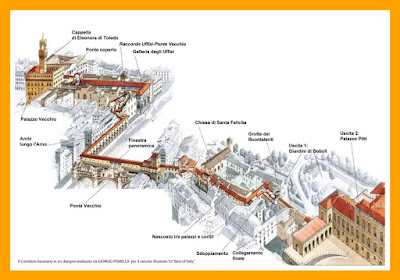STOP PRESS! As of 1 November 2021, ATAF as such disappears and re-incarnates under the auspices of Autolinee Toscane.
ATAF, or Azienda Tranviaria Automobilistica e Filoviaria, was established on October 25, 1945 to provide public transport in and around Florence. Now the signage has been taken down at the depot in viale dei Mille and the branding is being removed from the buses. On 31 October 2021, management of Florence’s bus service will shift to Autolinee Toscane, which will be in charge of bus services throughout Tuscany.
From 1 November, all times and services are expected to remain unchanged. Tickets may be purchased digitally by sending a SMS stating “Firenze” to 488.01.05 or by using the Tabnet app downloadable from the App Store or Google Play. Passengers will still be able to purchase tickets from official ticket offices, machines and authorised retailers that display the Autolinee Toscane sticker. Existing tickets will no longer be valid after 31 October, but refunds can be requested at Desks 8 and 9 at the Santa Maria Novella bus station ticket office.
STOP PRESS! As of 18th July 2019, Florence's ATAF buses allow contactless payment, meaning credit card touch technology. The system is installed on 355 buses within the city plus the airport bus, and currently accepts MasterCard, VISA, Maestro and V Pay. The ticket price of 1.50 euros and the validity duration of 90 minutes remain unchanged. When asked to produce your ticket by an inspector, simply tell him give the last four digits of the card with which you made the payment.This is an enormous time-saver and obviates the need to validate and manage paper tickets which tend to accumulate in the pockets of busy tourists. We await news on when the system will be installed on the trams.
There are a few simple but important things to know about using the city buses in Florence, Italy.
 |
| ATAF 90 minute bus ticket |
ATAF bus tickets should be bought BEFORE you board the bus. They are available from any kiosk (news stand) and from many cafés (bars), and at tobacconists. There are also two ATAF offices very near the SMN railway station where you can buy tickets. The most useful ATAF office is the one at via Alamanni 20r. You can get to it from inside the station by going down the steps leaving the station on the right (when facing away from the platforms), turn right again at the bottom of the steps, go past the very useful Conad supermarket, a florist shop and a post office. The ATAF office is the next place and is open Monday through Saturday 7.15am to 7pm.
In extremity, you can buy a ticket from the driver. Note that he's not obliged to provide change and sales are suspended if an inspector is on board.
 | |
| Etiquette indicating that ATAF tickets are sold inside. |
IMPORTANT Florence ATAF bus tickets must be validated as you enter the bus. You do this by inserting the ticket into the franking machine located beside or just behind the driver, and another near the rear entrance to the bus. Insert the pink strip uppermost and first into the machine. Check your ticket to make sure it was stamped with the date and time. Inspectors have no mercy on those without a ticket or with an unvalidated ticket or with an expired ticket - the fine is on-the-spot and painful (50 euros). If one machine is not working, try the other one. You only escape a fine if both machines are inoperative.
There is a good range of tickets available. Most commonly used is the 90 minute ticket. Using this you can get on and off as many buses as you like in any direction for the 90 minutes from when you validated the ticket.
Other tickets are good for four 90 minute rides. These tickets can be shared as long as they are validated the requisite number of times. For example, two people taking the number 7 bus to Fiesole could frank such a ticket twice to go and again twice to come back later in the day. These tickets have four strips for validation. Be sure not to overwrite your validation.
There are also 24 hours tickets and tickets for several days. Since these tickets are not meant to be passed from one person to another, YOU MUST WRITE YOUR NAME ON LONG DURATION ATAF TICKETS, such as 24 hour and three day tickets.
ATAF tickets are good for the small, electric buses that follow routes mainly through otherwise traffic-free lanes, and also for the trams. They are NOT valid for the bus that runs to and from SMN railway station and the airport. You can buy those tickets on the bus. Note that a taxi from the airport costs a fixed price of 20 euros plus baggage and late hours fees.
Last but not least, there are pickpockets on the buses and trams in Florence, especially when they are crowded and on routes favoured by tourists. Please read this article on pickpockets in Italy to understand what you can do to protect your valuables from these thieves. It's not as bad as in Rome, but they are here in Florence for sure.
|
Author: Anna Maria Baldini








